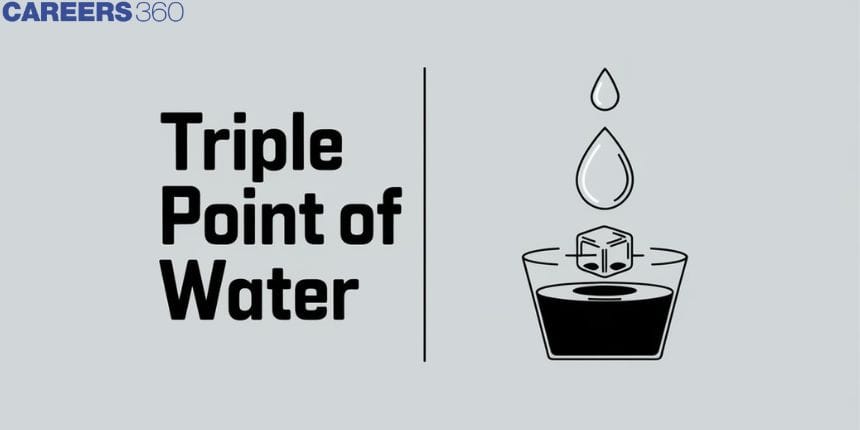Triple Point Of Water
Imagine a place where it can be in the solid, liquid, and gaseous forms all at once. This kind of special condition is what is known as the triple point of water. It is a temperature-pressure characteristic that ice, liquid water, and water vapour coexist in perfect harmony with one another. The triple point of water helps scientists study the properties of substances and is utilized in the science of thermodynamics. Knowing this concept enables us to understand more about things regarding the behaviour of matter under different conditions.

Some important terminologies
- Melting (or fusion) /freezing (solidification): The phase change of solid to liquid is called melting or fusion and the reverse phenomenon is called freezing or solidification.
- Vaporisation / liquefication (condensation) : The phase change from liquid to vapour is called vaporisation. The reverse transition is called liquefication or condensation.
- Sublimation: Sublimation is the conversion of a solid directly into vapours. So, in this, the solid is directly converted to vapour without entering into the liquid phase. The best example of this is the burning of Camphor.
Triple Point
If we plot a graph between pressure and temperature for any material. Then there are three curves form on this graph, they are - fusion curve, vaporisation curve and sublimation curve. The following graph shows the variation of pressure with temperature of the water -

Now, some description of the curves -
(i) Sublimation curve which connects points at which vapour (V) and solid (S) exist in equilibrium.
(ii) Vapourization curve which shows vapour and liquid (L) existing in equilibrium.
(iii) Fusion curve which shows liquid and solid existing in equilibrium.
The three curves meet at a single point which is called the triple point.
A triple point is that point for a substance where all three phases co-exist in equilibrium.
For water - A triple point exists at - Pressure = 0.0062 bar or, 62 Pascal
Temperature = 0.01oC or, 273.16 K
Recommended Topic Video
Summary
The triple point of water is the temperature and pressure at which, simultaneously, ice, liquid, and water vapour can coexist in stable equilibrium. This happens exactly at a temperature of 0.01 degrees Celsius, under 611.657 pascals of pressure. The triple point has been quite an important basic concept in science because it provides a very accurate reference point for temperature and pressure measurements.